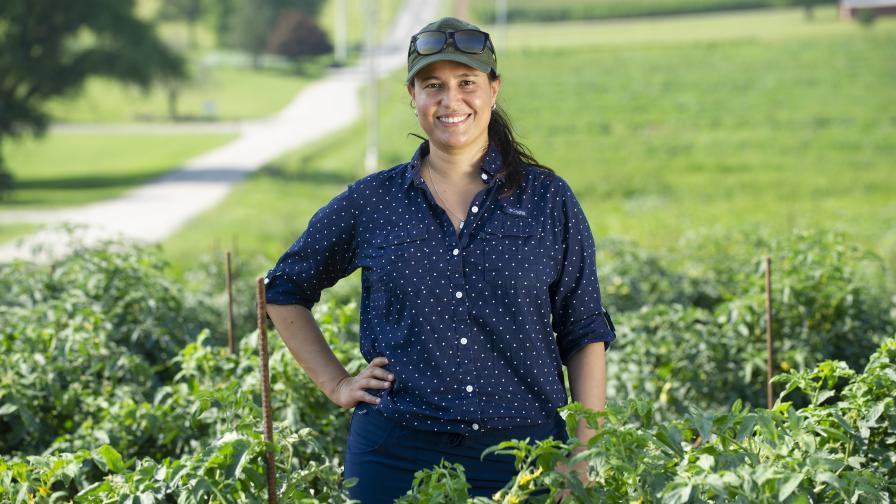SARE Grant Expands Tomato Research In High Tunnels

Researchers plan to identify soil test critical levels for nitrogen and potassium, and calibrate common soil tests under high tunnel conditions to determine appropriate methods for predicting nutrient availability for different varieties of tomatoes, demonstrate the benefit of plants to increase biodiversity, and reduce pest problems. Photo credit: Lori Wright, New Hampshire Agricultural Experiment Station

The high tunnel project is being led by New Hampshire Agricultural Experiment Station researcher Becky Sideman, Extension sustainable horticulture specialist, and will take place at the experiment station’s Woodman Horticultural Research Farm, Grafton County Farm in North Haverhill, and the University of Maine’s Highmoor Farm in Monmouth, ME. Other collaborators include researchers at the University of Vermont, Pennsylvania State University, and the Maine Organic Farmers & Gardeners’ Association. The project is supported by a grant from Sustainable Agriculture Research and Education (SARE).
High tunnels are inexpensive, greenhouse-like structures used to extend the growing season and increase crop quality and yields without increasing cultivated land area. Researchers plan to identify soil test critical levels for nitrogen and potassium, and calibrate common soil tests under high tunnel conditions to determine appropriate methods for predicting nutrient availability for different varieties of tomatoes, demonstrate the benefit of plants to increase biodiversity, and reduce pest problems.
“High tunnel production is economically critical to Northeastern vegetable growers, and tunnel production area is increasing rapidly. However, there has been limited work to develop and validate appropriate soil testing methods for tunnels. As a result, regionally appropriate recommendations for nutrient management are lacking. Developing fertilization guidelines based on research will ensure growers apply nutrient levels that maintain excellent crop quality without wasting nutrients,” said Sideman, who is overseeing the project.
“In addition, pests reproduce quickly and thrive in high tunnels, especially in the absence of natural enemies. However, certain plants provide conditions that support beneficial arthropods, promoting sustainable, low-cost integrated pest management while fostering biodiversity. Unfortunately, there are several barriers to grower adoption of integrated pest management, including limited knowledge about pest identification, how to use biocontrol effectively, and a lack of confidence that it works,” she said.
New Hampshire grows more tomatoes each year than any of the six New England states, according to the New England Field Office of the USDA National Agricultural Statistics Service. There are more than 2,000 growers Northern New England and surrounding states that produce tomatoes in-ground in high tunnels. High tunnel tomatoes represent a significant portion of their annual revenue.
The SARE grant expands the experiment station’s research on high tunnel tomato production. In the last two years, Sideman and Connor Eaton, a graduate student in plant biology, examined the effects of using potassium on organic tomatoes grown in five high tunnels at three research sites in New Hampshire and Maine. Potassium is an important macronutrient that affects tomato yield and quality.
“This research is critical in improving our understanding the interaction between fertilizer applications, soil testing, and crop yields in high tunnel tomatoes, one of the most important crops for New Hampshire’s local food industry. Our work aims to improve yields, increasing our local food supply and increasing gains for farmers,” Eaton said.
This material is based upon work supported by the New Hampshire Agricultural Experiment Station, through joint funding of the National Institute of Food and Agriculture, U.S. Department of Agriculture, under award number 228522, and the state of New Hampshire.










